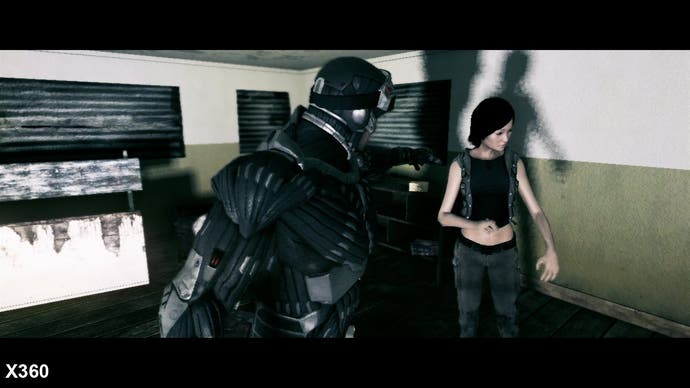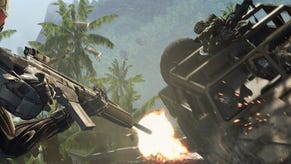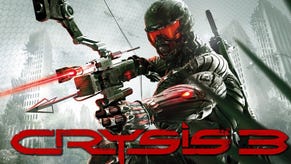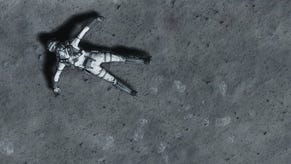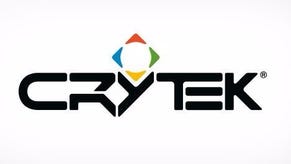Face-Off: Crysis
Can consoles run Crysis? Digital Foundry presents a triple-format analysis.
Inevitably, changes also have had to be made to the LOD streaming settings on console. This impacts everything from the quality of model used for trees, where higher quality assets dynamically swap in the closer you get to them, at which point minor objects, such as grass tufts or barrels, begin popping in. Let there be no ifs or buts about it; to recreate the complete sandbox experience Crysis is renowned for, concessions had to be made here, and they can be difficult to ignore when running in Speed Mode through busy areas of woodland. This is barely compensated for by the addition of minor incidental details during cut-scenes, such as icicles dangling from edges during the ice level, but these too are removed during the actual run of play.
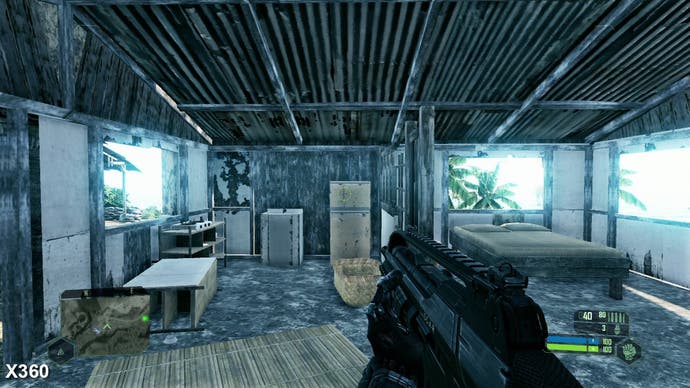


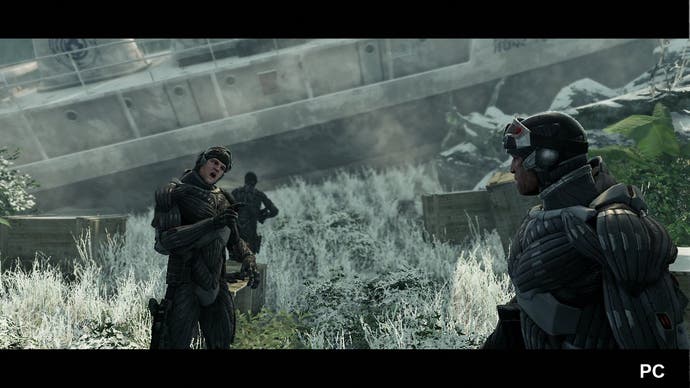
With that being said, the draw distance for the base geometry is still intact, with the parachute jump at the start giving you the full outline of your island playground, even if does come across as little barren on first glance. Up close, meanwhile, you'll notice some minor details have been outright removed from the floors of huts, such as litter on the floor, lamp-shades, or even items of furniture. These savings are likely in place to ease the burden on its physics engine, as drastic nosedives in performance are possible on both console versions when ploughing straight through buildings with a tank or truck - even with these omissions.
Perhaps one of the more curious changes to the console remasters was the omission of the cumbersome Ascension level. On PC, this sees the player navigating an airship across a series of valleys while fending off alien scouts, and permits them to trace their route back across some of the game's major landmarks, only from a higher vantage. Now, this may well have been removed as a result of either implications arising from technical restraints, size limitations set by Microsoft or Sony on downloads, or even time constraints - but it may also be that, just as Crytek UK claim, that it simply wasn't that much fun.
We're inclined to believe this may be the case, although as you may see in the video above, this ranks among the more technically taxing levels on PC, and consoles may well have suffered if it had been included. Much like the Onslaught level, where the combination of explosive tank warfare and destructible shacks reduced frame rates to a near single-digit crawl, this would have been a perfect storm for stuttering performance. In addition to the multiple, super-sized enemies, the hills are lined with swathes of trees that would have needed some aggressive LOD streaming and object culling to render properly. With enough optimising anything could have been possible, but the resulting image may not have been worth the time investment.
So, accepting these omissions and compromises to detail, the console versions of Crysis stack up pretty admirably against what should have been an impossibly high standard. Given that not everyone can afford a high-end PC, these releases may be the most convenient and inexpensive way to get the Crysis experience. But, for those lucky enough to own both home consoles, how do the PS3 and 360 versions compare to each other in like-for-like scenarios?
Much like in Crysis 2, the native resolution on 360 has remained at 1152x720, with a soft lock that results in occasional tearing at the top 5% of the screen. This is largely unnoticeable, and will often be obscured by the overscan area set by default on most HDTVs. Meanwhile, the PS3 runs with v-sync engaged, and also reuses the 1024x720 native resolution standard set by Crysis 2 - a reduction in fill rate which also saves them a whopping 14MB of RAM in the process.
Additionally, a frame-blending anti-aliasing solution is being used on both consoles to shave off the rough edges. Crytek prefer to label this technique as "PostMSAA 1.0" but the perceived effect is very similar to that of temporal AA techniques seen in Halo Reach, which takes care of elements in the distance by reconciling the edges in the current frame with an offset provided by the previous frame. This is effective, although it can result in an odd pixel-crawl in some busy scenes when making minute adjustments to the aiming reticle.
Shadows are dithered on both, but the effect is more pronounced on 360, with a more blocky look to them overall compared to the PS3's. Neither case is particularly ideal though. Meanwhile, equivalent texture assets are also shared between both, although during the later ice levels there's a marked difference in the transparency effects, resulting in either the softening or complete removal of the frost glazing on surfaces from PS3. This is replaced by a blank white sheen to trucks which doesn't quite convey the same level of depth.
